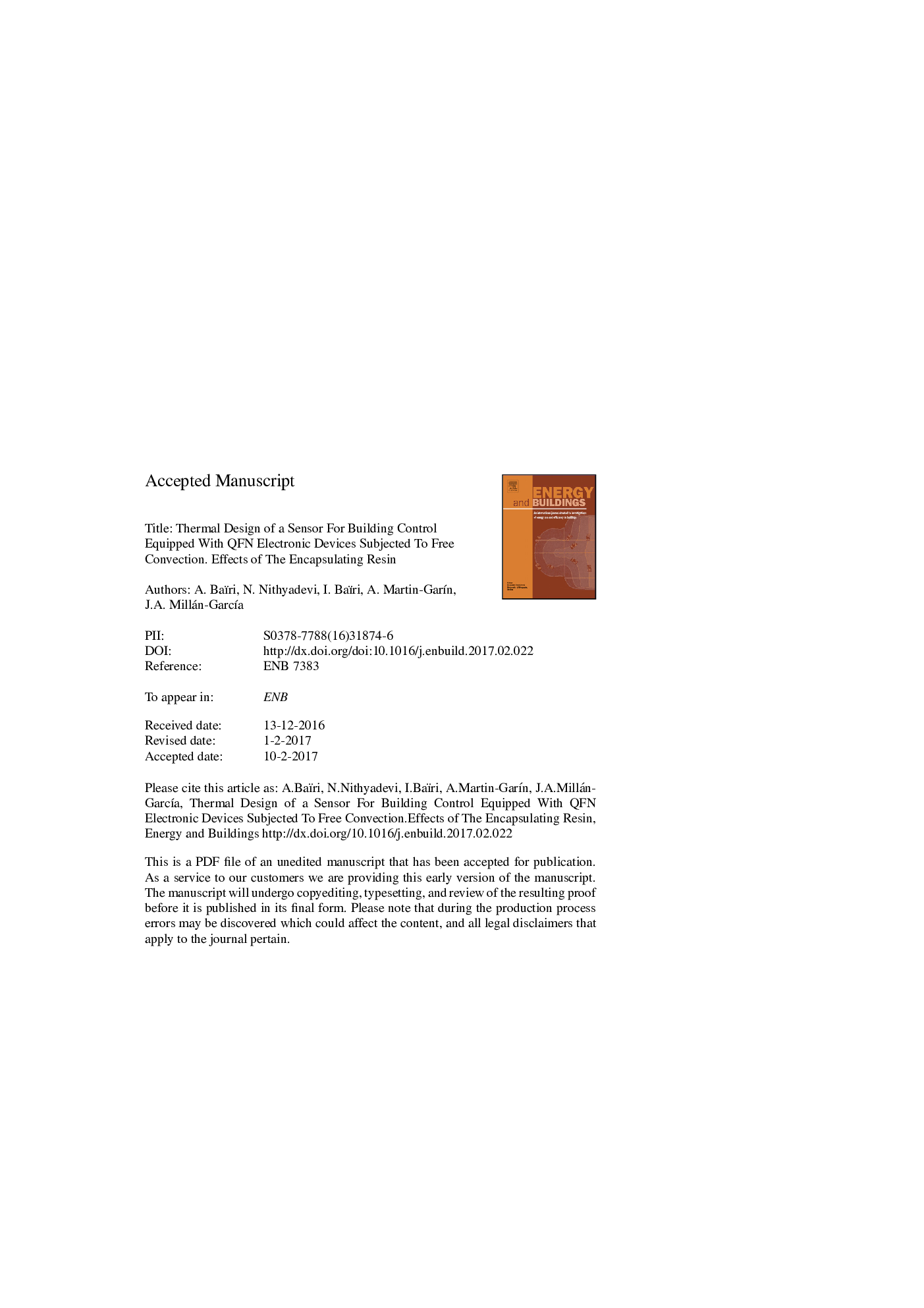| Article ID | Journal | Published Year | Pages | File Type |
|---|---|---|---|---|
| 4919074 | Energy and Buildings | 2017 | 28 Pages |
Abstract
This work deals with thermal design of a sensor used in modern building for equipment control, equipped with Quad Flat Non-Lead (QFN) electronic device. The junction temperature of this package is affected by the thermal characteristics of its components, especially the thermal conductivity of the resin used for its encapsulation. To ensure its reliability during operation, the junction temperature must be controlled so that the maximum value recommended by the manufacturer isn't exceeded. This aspect is examined in this work for 3 common devices, the QFN16b, 32b and 64b, which differ from their basic versions QFN16, 32 and 64 by the existence of a high conductive wires network connecting the active source to the leads. Several configurations are discussed in this work. The power generated during operation varies between 0.1 and 1.0W by steps of 0.1 W and the resin's thermal conductivity between â80% and +100% of its average value measured by means of the Transient Plane Source method. The inclination angle also plays an important role in the thermal state of these devices. It varies between 0 and 90° (horizontal and vertical positions respectively) by steps of 15°. The results obtained by means of a 3D numerical approach based on the volume control method are confirmed by thermal and electrical measurements. The junction temperature of the three examined devices can be calculated with relationships proposed in this survey for all the considered geometric and thermal configurations. These tools optimize the thermal design of these packages widely used in building field, improve their performance and ensure a high reliability.
Related Topics
Physical Sciences and Engineering
Energy
Renewable Energy, Sustainability and the Environment
Authors
A. Baïri, N. Nithyadevi, I. Baïri, A. Martin-GarÃn, J.A. Millán-GarcÃa,
